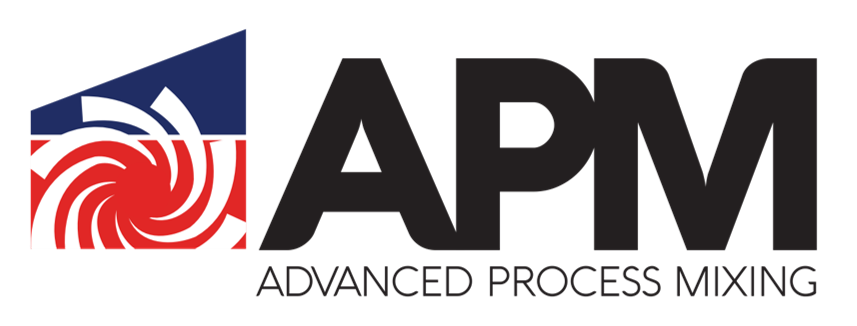- Banff WWTP Anaerobic Fermenter Mixing
- City of Kamloops WTP Sludge Mixing
- Banff WWTP Polymer Mixing
- City of Penticton WWTP Anoxic/Anaerobic Bioreactor Mixing
- City of Bratford WWTP Scum Mixing
- City of Erin WTP Flocculator
- SilverStar WWTP Anoxic Polishing Tank
Project: Wastewater Treatment Plant
Client: Banff WWTP, AB
Challenges
- Severe Solids settlement. As the sludge is from Primary clarifiers, there is significant amount of sand/grit which settle quickly in the tank. About 5~6 ft high sludge settlement along the wall.
- Frequent maintenance. In addition to routine oil changes (typically once a year), submersible mixer requires frequent pull-out to for maintenance to clean the ragging or other fibrous material. Such operation and maintenance also expose a safety concern.
- Air drawdown. The Owner would like to use this tank as an anoxic tank to create Valentine fatty acid (VFA). Conventional mixers create vortex which drawdown air and jeopardize the process objective.
- Large amount of debris in sludge causing significant cost of equipment O&M.
Solution
After detailed Life Cycle Cost analysis, High Performance Centrifugal Dispersing Impeller (HPCDI) from Apmixing Processing ltd. was selected.
The picture shows how much debris in the liquid. However, the HPCD works without any issue.
Value Created
- Energy saving. The power withdraw of your mixer is about 1.25 HP, which means more than 80% energy saving comparing to the products on the market including one who claimed the most energy efficient.
- Satisfactory performance: The HPCDI has superior solids suspension capability. Since commissioned, there is no solids settlement in the tank was observed!
- Easy and safe maintenance. About 30 minutes oil change annually (or longer)
The HPCDI is a top entry mixer so the maintenance is change the oil annually, spending about 30 minutes.
| Unit | Saving to Competitor 1 |
Saving to Competitor 2 |
Saving to Competitor 3 |
|
| Energy | kWh/yr | 140,160 | 56,940 | 35,040 |
| Electric Cost ($0.1/kWh) | $/yr | $14,016 | $5,694 | $3,504 |
| Carbon Reduction | lb/yr | 185,924 | 75,532 | 46,481 |
Competitor 1 – Submersible mixer; Competitor 2 – top entry mixer; Competitor 3 – Invent.
Additional Value
In addition to above saving, the client right now use this sludge mixing tank as a fermenter to produce volatile fatty acid (VFA) for biological nutrient removal. It is estimated about 40~100 kg VFA produced daily. It was estimated an additional value of $20,000~34,000.
Project: KCWQ
Client: The City of Kamloops, BC
Problems:
- Heavy sludge settlement. Sludge was found settled about 6 ft high along the tank walls.
- Inconsistent concentration sludge sent to centrifuges and cause difficulties of centrifuge operation.
Solution
KCWQ contacted Apmixing Process Ltd to replace the existing mixer with HPCD technology.
Value Created
- Increased tank volume. No settlement at the tank bottom
- Consistent centrifuge sludge feed. HPCD provides efficient mixing creating homogenous sludge in the tank and centrifuge feeding
- Improved centrifuge performance.
- More than 80% Energy saving. The HPCD consumes about 0.704 kW power (comparing with existing 2 kW sub mixer). In addition, it runs intermittently for about 25% of the time, because its superior capacity of sludge re-suspension.
- Centrifuge polymer saving.

Project: Wastewater Treatment Plant Coagulator
Client: Banff WWTP, AB
Challenges
The mixer has ever been worked satisfactory. There was polymer settled at the bottom, attached to the impeller and shaft, and there are large amount of fish eyes in the liquid.
The Owner would like to use existing motor and gearbox to save cost.
Solution
Apmixing proposed HPCD-G to replace the existing conventional impeller. The new impeller create high shear as well as high flow rate.
Value Created
No fish eye present after the installation of the HPCD-G in the dilution tank. Polymer is fully diluted.
The day tank is not needed.
Polymer dosing rate has been reduced.
Project: Wastewater Treatment Plant Bioreactors
Client: City of Penticton, BC
Challenges
Insufficient mixing performance by conventional mixing technologies.
Dead zones or bypass will also affect the system performance.
Solution
Replace existing conventional mixers with HPCD to create satisfactory mixing performance by the flow pattern created. The dispersing flow pattern provide ideal hydraulic conditions for Granular formation.
Value Created
Improved mixing performance
Improved bioreactor performance
Promoted Aerobic Granular Sludge (AGS) formation.

Project: Wastewater Treatment Plant Primary Clarifier Scum Mixing
Client: City of Bratford, ON
Challenges
Mixing both scum and solids
Solution
Installed HPCD to drawdown the light scum at water surface and also lift solids at the tank bottom.
Project: Water Treatment Plant Flocculator
Client: Town of Erin, ON
Satisfactory coagulation/flocculation is the key to the WTP performance. It requires proper velocity gradient for the flocs to grow. High velocity or high shear will break the flocs so the system performance will be impacted.
Dead zones or bypass will also affect the system performance.
The shape of the tank makes it difficult for conventional coagulator/mixer to create the required flow patter for satisfactory coagulation. Most flocculator/mixer requires baffles to be installed in the tank to prevent vortex which has poor mixing.
Solution
Flow pattern with high flow pumping rate and low flow velocity is needed for satisfactory system performance. Apmixing proposed flocculator as shown in the picture with extra vanes configured in the impeller.
Value Created
Cost saving without no baffle installation.
Satisfactory flocculation performance.

Project: Wastewater Treatment Plant Anoxic Tank
Client: Silverstar WWTP, BC
Challenges
This is anoxic process and the Client required little water surface disturbance. No vortex formed and no air drawdown to the liquid.
Solution
We proposed and provided our HPCDI-X which is specifically designed for oxygen sensitive reaction mixing.
Value Created
Satisfactory mixing. All process parameters meet the requirements.
Least maintenance and operation attention: the only maintenance the client do is the annual oil change which takes less than 30 min each event


